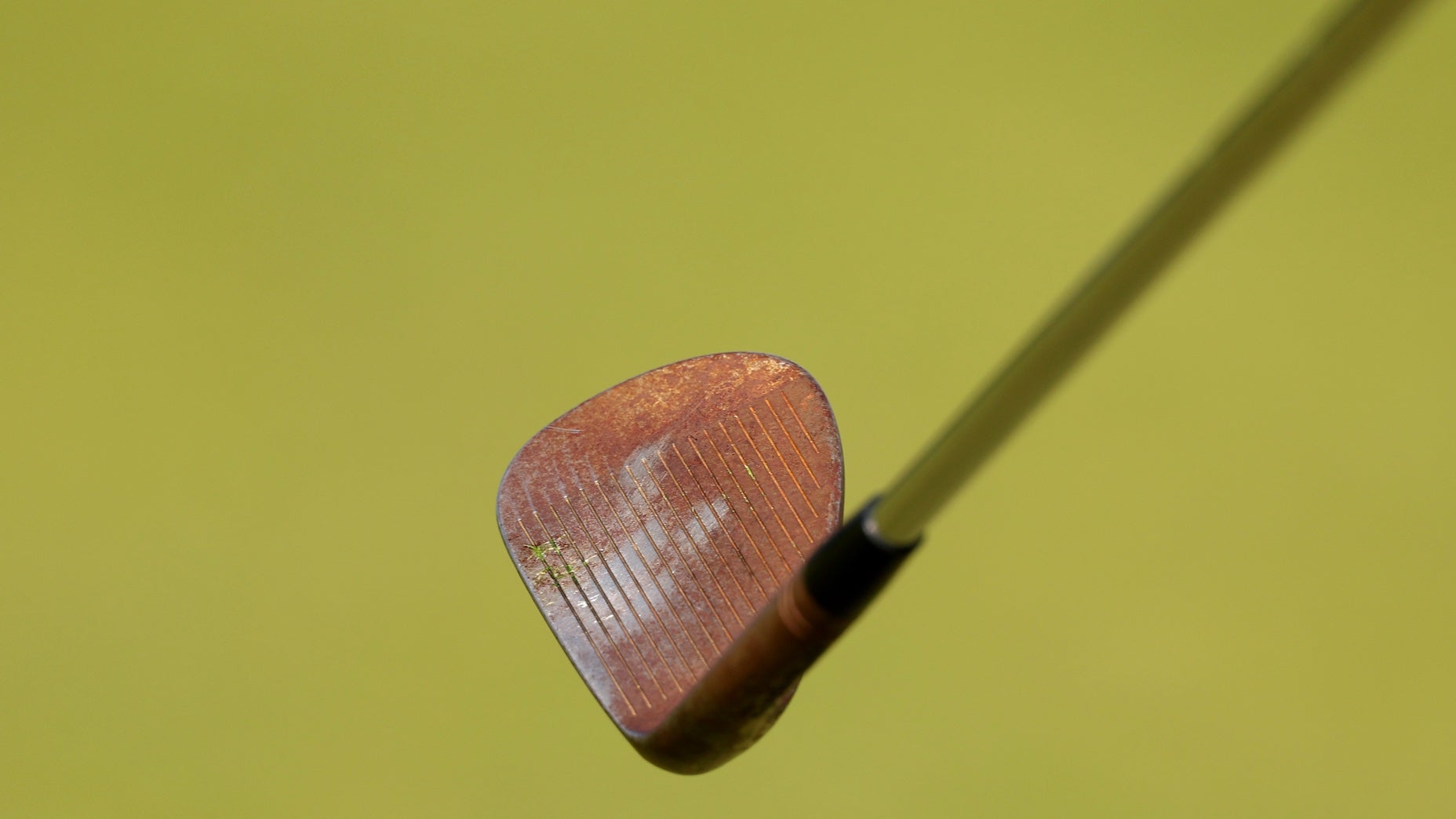Think it’s time for fresh wedges? Do this test to be sure | Fully Equipped Mailbag

It's easy to spot wear on a wedge face, but important to know when the wear is going to affect performance.
Jonathan Wall/GOLF
Welcome to another edition of the Fully Equipped mailbag, an interactive GOLF.com series in which our resident dimplehead (a.k.a., GOLF’s managing editor of equipment, Jonathan Wall) fields your hard-hitting gear questions.
I picked up a set of used wedges recently that have some noticeable wear on the faces. I’m not quite sure if the wear is messing with my short game, so I’ve continued to play them because they were relatively cheap. Is there a way to know for sure when they are completely shot? — Titus, Sacramento
Titus, I want you to think of your wedge grooves as a set of tires. When the tread starts to wear down, you increase the chances of a host of things going wrong — suspension, alignment, blowout. These are just a few of the major issues that could occur if you drive on tires with little to no tread. And we haven’t even discussed adding rain to the equation.
This isn’t an automotive mailbag, but it’s important to point out the value in keeping tabs on your tires. The “penny test” is a simple way to determine if it’s time for new wheels. Grab a single Abe Lincoln and you’re good to go.
What’s interesting is a similar groove test can be conducted on your wedges to determine if they need to be replaced. Commonly referred to as the “fingernail test,” it simply requires you to run your fingernail down the face of the wedge to see if your nail gets caught in each groove. If you’re catching each groove along the way, then you can rest easy knowing the wedge still has life.
TaylorMade Milled Grind 4 Custom Wedge
$179.99
View Product
However, if your nail runs right across any of the grooves — the lower grooves are the most important for most amateurs — it’s probably because they’re completely worn. That’s when you know it’s time to spring for a new wedge.
Thankfully, wedges are relatively inexpensive compared to a new driver or iron, so you won’t have to break the bank for a fresh sand or lob wedge.
And if you’re still skeptical about how much groove wear impacts performance, GOLF.com ran a test a few years back that revealed a new wedge produced nearly 2,000 RPMs more spin on a 90-yard shot when compared to a wedge with grooves that weren’t anywhere close to being shot.
Now imagine what that spin delta would look like against a worn-out scoring tool. Give the “fingernail test” a try to ensure you never have to worry about sacrificing performance on the course.
Want to overhaul your bag for 2023? Find a fitting location near you at True Spec Golf.












